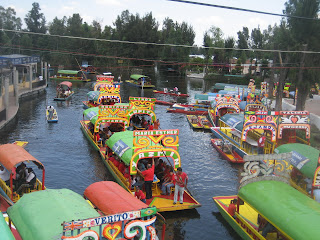While our group experienced ups and downs we continued to be exposed to numerous speakers and classes that contributed to our expanding knowledge of Mexico.
One especially interesting trip took place on Tuesday when our Social Policy class went to theCongreso de Morelos (Morelos Congress). We first toured the building which is located near the Zocalo (main plaza) in central Cuernavaca. The building itself was formally a theater but it is now adorned with murals and statues of historical figures such as Emiliano Zapata and José María Morelos (for whom the state of Morelos was named). During the tour we received a brief history of these Mexican revolutionaries which was a nice refresher from our history classes at CGE.

Our Am. Welfare Policy Class in front of two Mexican flags at the Morelos Congress
After the tour we settled in the senate chamber where we heard from numerous speakers on topics such as education and labor.
The first woman we heard from was a member of the PRI party (Institutional Revolutionary Party) and sits on the education committee. She spoke to us about her desire to create a totally free system of education in Mexico as well as her hope of adequately representing her municipality. While our group thought her devotion to fair representation was noble, there was some speculation that her view of the indigenous population was not conducive to sufficient representation.
We also had the chance to talk about labor practices in Mexico. It was enlightening to hear from the President of the Commission on Work. It seemed that the main point he wished for us to remember was the importance that must be placed on the work of the individual. While our class was impressed by many of the labor laws in place in Mexico (such as the length of maternity leave), many of us expressed concern on the degree to which such practices are enforced.
Overall our trip to the Congreso de Morelos opened our eyes yet again to policy and practice in Mexico. We appreciated the chance to hear first hand accounts of how policy is shaped and enforced specifically in our state of Morelos.
Is skepticism of policy enforcement a universal phenomenon?
 ................
................  ...........
........... ..............
..............







